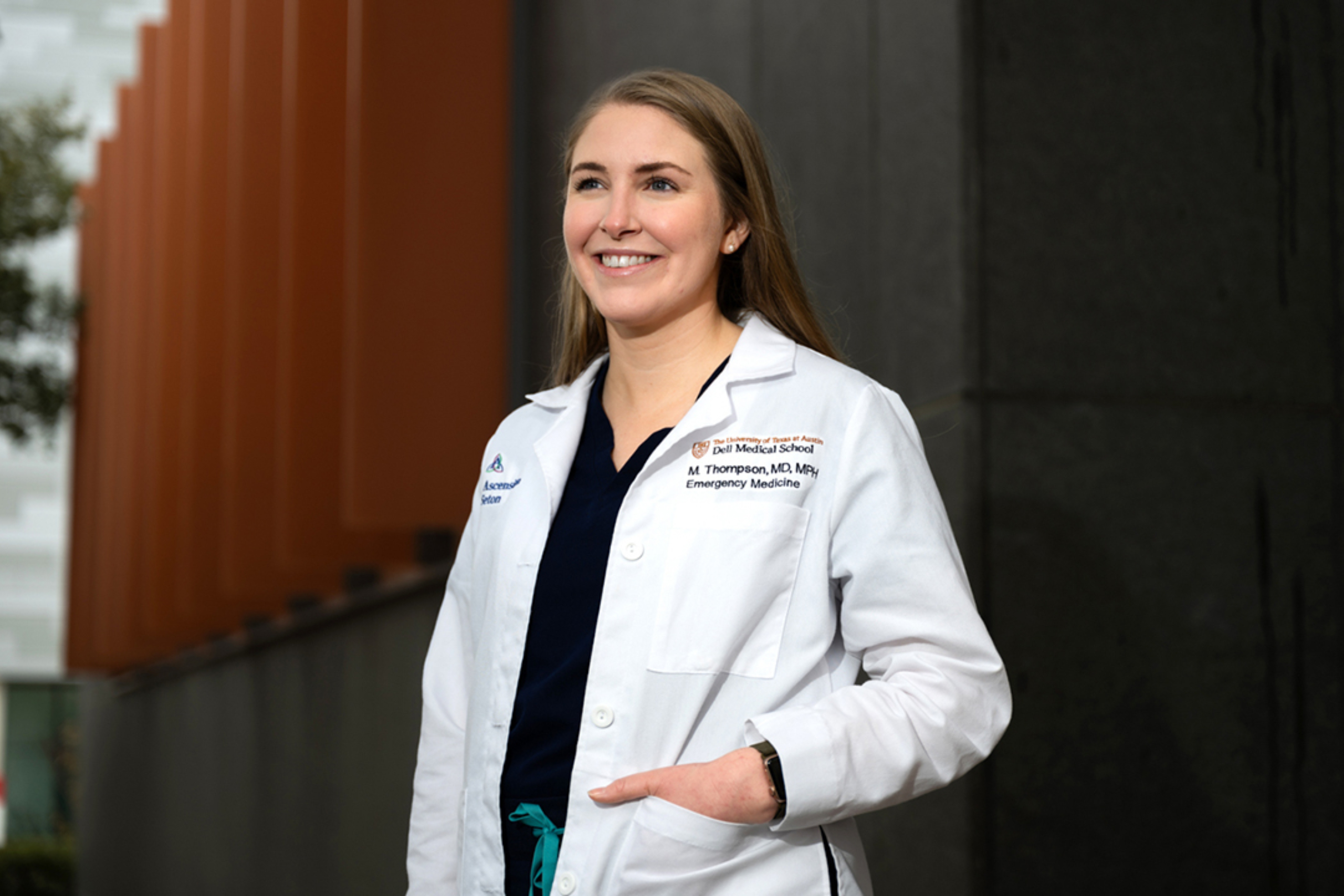In the context of medicine, high utilizers — or “frequent fliers” — are patients who repeatedly visit the emergency department not for emergent situations, but to seek access to routine primary care.

Mackenzie Thompson, M.D., MPH.
With the average cost of treating common primary care conditions at an emergency department being 12 times higher than visiting a primary care physician’s outpatient office, this recurrent use of emergency resources is estimated to contribute $65 billion in rising health care costs nationally.
Employing her interest in the social constructs of health care, past experiences as an educator and a drive to help the patients who need it most, emergency medicine resident Mackenzie Thompson, M.D., MPH, is providing health care solutions for the patients she prefers to call “MVPs”.
Q&A With Thompson:
Why emergency medicine? Tell us about your path so far.
Before medical school, I participated in Teach for America and taught eighth grade science in South Dallas. I realized the same social inequities that affected my students in the classroom also impacted their physical and mental health. This inspired me to pursue dual degrees in medicine and public health and seek to understand the difficulties patients face at both an individual and community level. Now, as an emergency medicine resident, I’m moving beyond temporary palliation to make a lasting impact on my patients’ well-being.
Many of us consider an emergency to be a life-and-death situation, like a heart attack or a drug overdose. However, my interactions with patients and families over the past 2 1/2 years helped me realize that the word “emergency” has many meanings. Some days, this may include fighting for a patient’s life through resuscitation, while other times, it might mean teaching a patient how to advocate for themselves and their health.
Ultimately, I hope to contribute to emergency medicine by uplifting the underserved, stabilizing the traumatic and continually paving the way for an innovative and integrative structure to connect patients to appropriate long-term care.
What are you actively doing to accomplish those long-term goals?
I am pursuing a Distinction in Care Transformation project called “The Most Visited Patient (MVP) Project.”
High utilizers represent a small percentage of the total number of emergency department
patients, 5%-8%, but constitute a disproportionate percentage of annual emergency visits at 21%-28%. This recurrence in visitation contributes to the high expenditure of valuable health care resources in emergency departments around the nation.
My team and I plan to examine the specific factors contributing to frequent nonemergent use of the Dell Seton Medical Center emergency department by people enrolled in the Medical Access Program, or MAP, a health coverage program for uninsured Travis County residents with low income. Our MVPs are patients enrolled in MAP who have visited the emergency department three or more times over a 90-day period. Starting this fall, with the help of Central Health and some fantastic medical students, we have performed interviews using a standardized questionnaire to collect data on patterns of utilization, like social versus medical needs, drivers of repeat utilization and barriers that prevent patients from visiting their medical home.
Through these interviews, we have identified several themes that make it difficult for MVPs to follow up in their medical homes, including communication, transportation and an inability to pick up prescriptions. Patients stated they did not know they had a medical home or how to get to the clinic and had trouble making an appointment. We found that most MVPs depend on the bus, walk or have other people drive them, making it difficult to attend appointments. Because many MVPs listed an inability to pick up prescriptions as a barrier to their health, we are working with Dell Seton’s outpatient pharmacy to make improvements, ensuring that our MVPs are getting their prescriptions and improving utilization of our meds-to-bed program.
By focusing on these root causes, we believe we can significantly impact emergency
department crowding, recurrence of visits, health care costs and most importantly the quality of care for our MVPs. It is my hope that the MVP project and the initiatives born out of this project will continue for years to come.
Is there a particular experience that has impacted your approach to this work?
One night, during a shift as a medical student, I met a kind, hardworking man who lacked access to care and the health literacy to understand that the ulcer on the sole of his foot may be related to undiagnosed and uncontrolled diabetes. After a somber discussion, we concluded that he would ultimately leave the hospital without his toe.
Once the initial shock dissipated, we spoke about the importance of access to care in
preventing the need for further amputations. We practiced how to ask for a social worker and what he would say once he reached his patient room. By the end of our conversation, he was more prepared to advocate for himself and his health, and I knew exactly what I wanted to spend the rest of my career doing.
Graduate medical education, or GME, refers to the period of education in a particular specialty or subspecialty following completion of medical school. This continuation of training through residency and fellowship programs provides the clinical and educational experience needed for physicians to achieve autonomy, deliver high-quality patient care, and prepare for challenges in an evolving health care landscape.
Dell Med serves as the academic home and Ascension Seton as the clinical home for 494 resident and fellow physicians within more than 45 residency and fellowship programs ranging from family medicine and neurology to pediatric emergency medicine and cardiovascular disease.